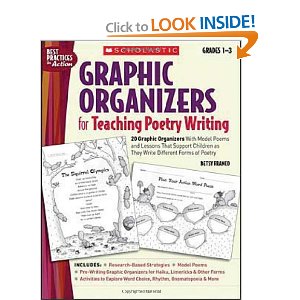 Poetry (from the Greek poiesis — ποίησις — meaning a “making”, seen
also in such terms as “hemopoiesis”; more narrowly, the making of
poetry) is a form of literary art which uses aesthetic and rhythmic
qualities of language—such as phonaesthetics, sound symbolism, and
metre—to evoke meanings in addition to, or in place of, the prosaic
ostensible meaning.
Poetry (from the Greek poiesis — ποίησις — meaning a “making”, seen
also in such terms as “hemopoiesis”; more narrowly, the making of
poetry) is a form of literary art which uses aesthetic and rhythmic
qualities of language—such as phonaesthetics, sound symbolism, and
metre—to evoke meanings in addition to, or in place of, the prosaic
ostensible meaning.Poetry has a long history, dating back to the Sumerian Epic of Gilgamesh. Early poems evolved from folk songs such as the Chinese Shijing, or from a need to retell oral epics, as with the Sanskrit Vedas, Zoroastrian Gathas, and the Homeric epics, the Iliad and the Odyssey. Ancient attempts to define poetry, such as Aristotle’s Poetics, focused on the uses of speech in rhetoric, drama, song and comedy. Later attempts concentrated on features such as repetition, verse form and rhyme, and emphasized the aesthetics which distinguish poetry from more objectively-informative, prosaic forms of writing. From the mid-20th century, poetry has sometimes been more generally regarded as a fundamental creative act employing language.
Poetry uses forms and conventions to suggest differential interpretation to words, or to evoke emotive responses. Devices such as assonance, alliteration, onomatopoeia and rhythm are sometimes used to achieve musical or incantatory effects. The use of ambiguity, symbolism, irony and other stylistic elements of poetic diction often leaves a poem open to multiple interpretations. Similarly, metaphor, simile and metonymy create a resonance between otherwise disparate images—a layering of meanings, forming connections previously not perceived. Kindred forms of resonance may exist, between individual verses, in their patterns of rhyme or rhythm.
Some poetry types are specific to particular cultures and genres and respond to characteristics of the language in which the poet writes. Readers accustomed to identifying poetry with Dante, Goethe, Mickiewicz and Rumi may think of it as written in lines based on rhyme and regular meter; there are, however, traditions, such as Biblical poetry, that use other means to create rhythm and euphony. Much modern poetry reflects a critique of poetic tradition,[5] playing with and testing, among other things, the principle of euphony itself, sometimes altogether forgoing rhyme or set rhythm. In today’s increasingly globalized world, poets often adapt forms, styles and techniques from diverse cultures and languages.
Here are some tips from Brod Bagert, on writing poetry
Find the Courage to Create:
- It’s not crazy to strive to be the equal of the Great Poets of the past.
- Be prepared to work hard to make good poems.
- Write for the love your reader.
View these poetry tips>
Build the Basic Skills
- Writing is rewriting
- The trick to producing clean rhyme
- Making rhythm
- The secret of sound”
- Voice and Voices
View these poetry tips >
Avoid the Deadly Poison
- A poem is a picture in words.
- Good poetry must be difficult to understand.
- Comedy can never be great art.
View these poetry tips >Find the Courage to Create:
- It’s not crazy to strive to be the equal of the Great Poets of the past.
- Be prepared to work hard to make good poems.
- Write for the love your reader.
View these poetry tips>
Build the Basic Skills
- Writing is rewriting
- The trick to producing clean rhyme
- Making rhythm
- The secret of sound”
- Voice and Voices
View these poetry tips >
Avoid the Deadly Poison
- A poem is a picture in words.
- Good poetry must be difficult to understand.
- Comedy can never be great art.
View these poetry tips >
No comments:
Post a Comment